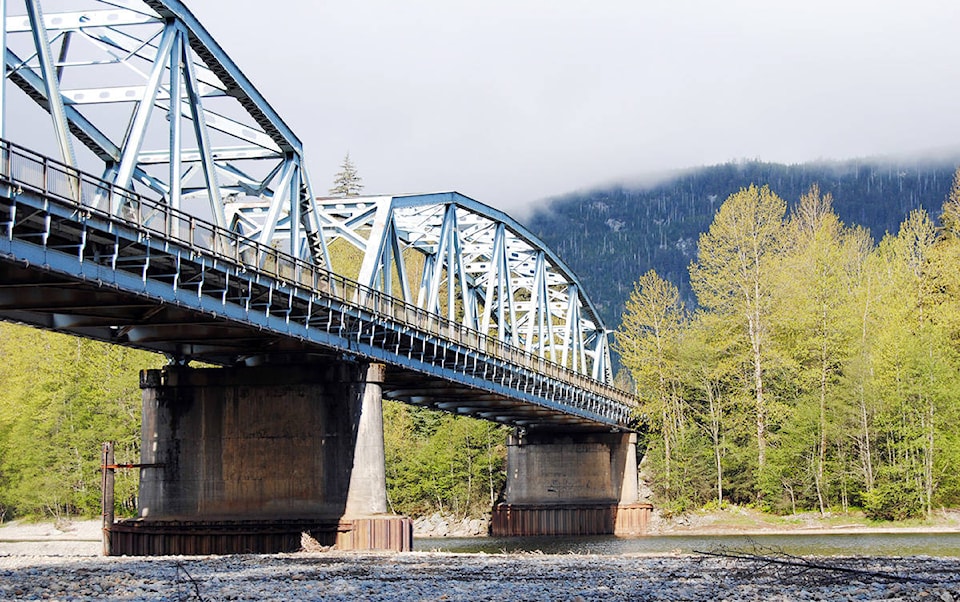Kitimat council faces a difficult task in deciding the future of the Haisla bridge, says mayor Phil Germuth.
Built in 1954, the structure is in generally good shape but it does require seismic upgrades and other significant work which would extend its service life for 30 years.
The total bill, including annual maintenance expenditures over that 30-year period, is pegged at $12.6 million, estimates an engineering report commissioned by the district earlier this year.
But council also has to consider whether the bridge, even after rehabilitation and improvements, would be sufficient for the kind of industrial traffic that would be generated should LNG Canada decide to go ahead with its massive liquefied natural gas plant, said Germuth.
A new structure would be one allowing taller traffic, a key consideration for the movement of equipment and supplies.
“A rehabilitated bridge would give us another 30 years, but a new one would have a 70-year lifespan,” Germuth noted.
On balance, he continued, a new structure would be the best option for the area’s long-term needs.
Yet at a projected cost of more than $50 million, it’s an expenditure that’s out of the district’s reach, requiring the assistance of senior governments.
“We’re monitoring grant opportunities and we’d be looking for community partnerships with First Nations and industry,” said Germuth.
Traditionally, a project of this size would be cost-shared, one-third by a municipality, one-third by the provincial government and one-third by the federal government, with the district first having a business plan signed off by the province before approaching the federal government.
Germuth acknowledged that a decision by LNG Canada to proceed with its project would help spur the case for a new structure.
“Ideally, then, you’d want it to be finished before that project starts,” he said.
Germuth added that background work such as continued access to Kitimat Rod and Gun Club property and new approaches has already taken place so that council is aware of the large scope of work required.
The engineering assessment prepared for the district by COWI North America pegged estimated seismic upgrades at $3.282 million, a figure that includes a 50 per cent contingency allowance.
That estimate was developed by comparing similar projects.
“A cost-effective retrofit strategy to meet the assumed performance criteria could be to seismically isolate the superstructure from the substructure,” the assessment indicated.
That would include replacing the eight current truss span bearings with seismic isolation bearings.
Rehabilitation itself of the current structure could cost up to $5 million, excluding a 50 per cent contingency allowance.
Crucial to rehabilitation is the re-coating of the bridge steel, identified as a high priority by COWI, followed by replacing the steel grating.
Re-coating is necessary to mitigate degradation of the steel due to corrosion, noted COWI, as the bridge was last painted approximately 30 years ago.
“Repainting the bridge now would produce a coating that could last for another 30 years,” the COWI report emphasized.
Welds on the steel grating have been cracking and while repaired every year, COWI noted that an “appropriate service life of the steel decking would be 15 years”, indicating that the grating would need to be replaced twice to reach the intended 30-year service life.
Regular maintenance costs over 30 years and as well continued inspection round out COWI’s estimate of a $12.624 million price tag, should council decide on rehabilitation of the structure.
And should a new bridge be built and should council then decide to remove the current one, COWI estimates the cost at anywhere from $1.665 million to $2.495 million. COWI did point out that demolition would be somewhat easier because steel grating would be easier to remove than a concrete deck.
The steel decks would also have a salvage value.
